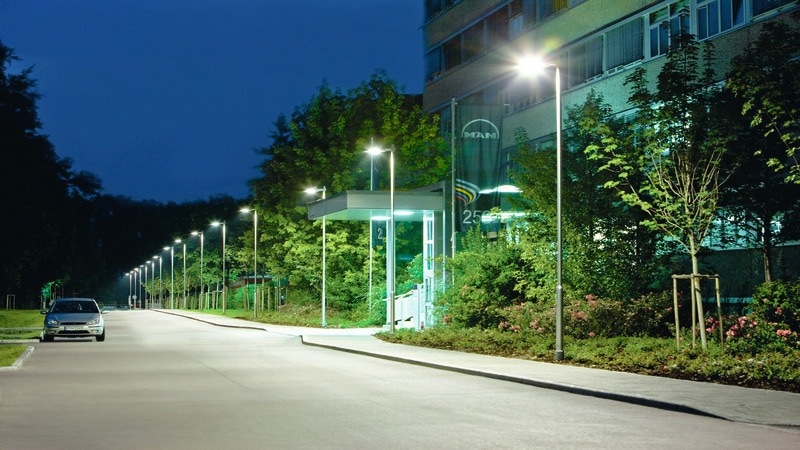In this article, we'll explore what an Environmental Product Declaration (EPD) is, why it matters, and how EPDs can help businesses to align with sustainability goals and stakeholder expectations
As the UK, like all global communities, grapples with the pressing challenges of environmental degradation and resource depletion, there is a growing imperative on manufacturers, government, and consumers to understand and minimise the environmental impacts associated with the products they produce, regulate, and consume. This pursuit of environmental sustainability has sparked a heightened demand for reliable and transparent information that can guide informed decision-making towards more environmentally conscious choices.
For stakeholders and customers of the UK lighting industry, the situation is no different. Manufacturers, designers, installers, specifiers - they are all looking for that holy grail of a single, understandable, and reliable method to guide their decisions.
However, quantifying and comparing the multifaceted environmental footprints of products across various impact categories, poses a formidable challenge. The intricate web of supply chains, manufacturing processes, and disposal or re-use methods that underpin the lifecycle of a product makes it exceedingly difficult to accurately assess and compare the environmental implications of different products and their alternatives. The need for assessing environmental impacts has indeed led to a proliferation of green labels, circularity scores, and sustainability rating methods aimed at simplifying the comparison of products. However, reducing the complex matter of evaluating various environmental impacts to a one-dimensional, simplified rating system or a single logo is problematic and can be misleading.

Enter EPDs
As sustainability becomes an increasingly vital consideration in architectural and construction projects, Environmental Product Declarations (EPDs) serve as essential tools for navigating the myriad choices available. First, what is an EPD?
An EPD is a standardised document that provides comprehensive information about the environmental impact of a product throughout its life cycle. This includes data on raw material extraction, production, usage, and end-of-life disposal, ensuring that this is a source of information that is transparent, reliable, and comparable across similar products. EPDs provide invaluable insights into a product's environmental impact throughout its life cycle, offering data on energy consumption, carbon emissions, and resource usage. By utilising EPDs, consultants and architects can make informed decisions that align with their sustainability objectives, ultimately contributing to greener and more eco-conscious designs. EPDs are derived from Life Cycle Assessments (LCA), which consider all stages of the product life cycle including raw material extraction and transport, product manufacturing and delivery including installation, operation, disposal and recycling.
EPDs v/s other regulations
As a steppingstone towards full EPDs, the UK’s Chartered Institution of Building Services Engineers (CIBSE) developed a Technical Memorandum in 2021: TM65/TM65.2, “Embodied carbon in building services: A calculation methodology”, which basically is a narrowed-down EPD focusing on carbon footprint only. TM65/TM65.2 simplifies but builds on international ISO standards that have been developed by experts over the years. As such, it is a half-way step towards a practice where full EPDs are being created to demonstrate all environmental impacts of products throughout their lifecycle. By TM65, the UK lighting industry is being pointed towards more robust and complete calculation methods. It should also be noted that TM65 states that if a product EPD exists then the TM65 assessment does not need to be applied.
In 2021, CIBSE introduced TM66, that sets out what designing and manufacturing to comply with circular economy principles entails and includes a checklist, a method of assessing a product’s circular economy performance, and real-world examples of good practice. TM66 was created to address an immediate need that was emerging in the lighting industry. Manufacturers were seeking ways to make their products more sustainable, create circular designs, explore re-manufacturing and substantiate their green claims. Likewise, customers and specifiers were seeking independent evidence of claims made, and a simple scoring system to compare at least some of such product claims was more than welcome. The TM66-CEAM tool was useful for filling that gap.
EPDs on the other hand, offer a comprehensive assessment across a product's entire life cycle covering all environmental aspects, following standardized formats, and undergoing independent verification. In some cases, a product might have both an EPD and a TM66 report, providing an even more in-depth look at its environmental impact. Think of an EPD as a detailed environmental biography of a product, while TM66 is a specific chapter focusing on its end-of-life potential. Use an EPD for a comprehensive environmental impact assessment across any product category. Use TM66 for a quick assessment of a lighting product's circularity characteristics, particularly embodied carbon (manufacturing emissions).

At Signify, we walk the talk
As lighting currently accounts for 12% of global electricity consumption and 5% of global CO2 emissions1, transitioning to energy-efficient LED lighting can significantly reduce global electricity consumption. EPDs quantify products’ environmental impact over their full life cycle, enabling comparisons to comparable products and empowering customers to make informed decisions on lighting investments.
In addition to driving greater transparency for customers, EPDs are advancing evidence-based sustainable innovation within Signify, providing a quantified footprint which acts as a baseline for further improvements in next generation product iterations.
EPD certification is particularly relevant to several key stakeholders: specifiers, end users and environmentally conscious consumers. For manufacturers EPD certification is a proactive approach to environmental responsibility and compliance with international sustainability standards. For businesses and end users, especially those with sustainability goals, EPD-certified products are invaluable. Incorporating the EPD-certified products into their infrastructure allows these companies to align with their environmental objectives and meet regulatory requirements. EPD certification also provides the data needed to substantiate sustainability claims, making it easier for businesses to report on their environmental impact.
We recognise that and so have already made available more than 2,000 Environmental Product Declarations (EPDs), covering more than 70,000 product variations around the world. Due to customer demand, the Americas are currently served by the Declare labelling system. As the EPD program continues, all products worldwide will ultimately receive EPDs. We have also committed to sharing the environmental impact of its full range of products. In addition to driving greater transparency for customers, EPDs are advancing evidence-based sustainable innovation within Signify, providing a quantified footprint which acts as a baseline for further improvements in next generation product iterations.
In conclusion
By providing transparent and verified information about a product’s environmental impact, EPDs empower stakeholders to make informed decisions and contribute to global sustainability goals. Whether you are a manufacturer seeking certification or a designer selecting materials for a project, understanding the importance of EPDs ensures alignment with industry standards and a commitment to a sustainable future.
EPDs are advancing evidence-based sustainable innovation within Signify, providing a quantified footprint which acts as a baseline for further improvements in next generation product iterations. The time is now, for the UK lighting industry to raise its ambition and embrace EPD methods tailored for the industry that will better stand the test of time.
Read our whitepaper Assessing & substantiating environmental impacts with EPDs to see how Signify walks the talk.
Signify (Euronext: LIGHT) is the world leader in lighting for professionals and consumers and lighting for the Internet of Things. Our Philips products, Interact connected lighting systems and data-enabled services, deliver business value and transform life in homes, buildings and public spaces. In 2022, we had sales of EUR 7.5 billion, approximately 35,000 employees and a presence in over 70 countries. We unlock the extraordinary potential of light for brighter lives and a better world. We achieved carbon neutrality in our operations in 2020, have been in the Dow Jones Sustainability World Index since our IPO for six consecutive years and were named Industry Leader in 2017, 2018 and 2019. News from Signify is located at the Newsroom, Twitter, LinkedIn and Instagram. Information for investors can be found on the Investor Relations page.
